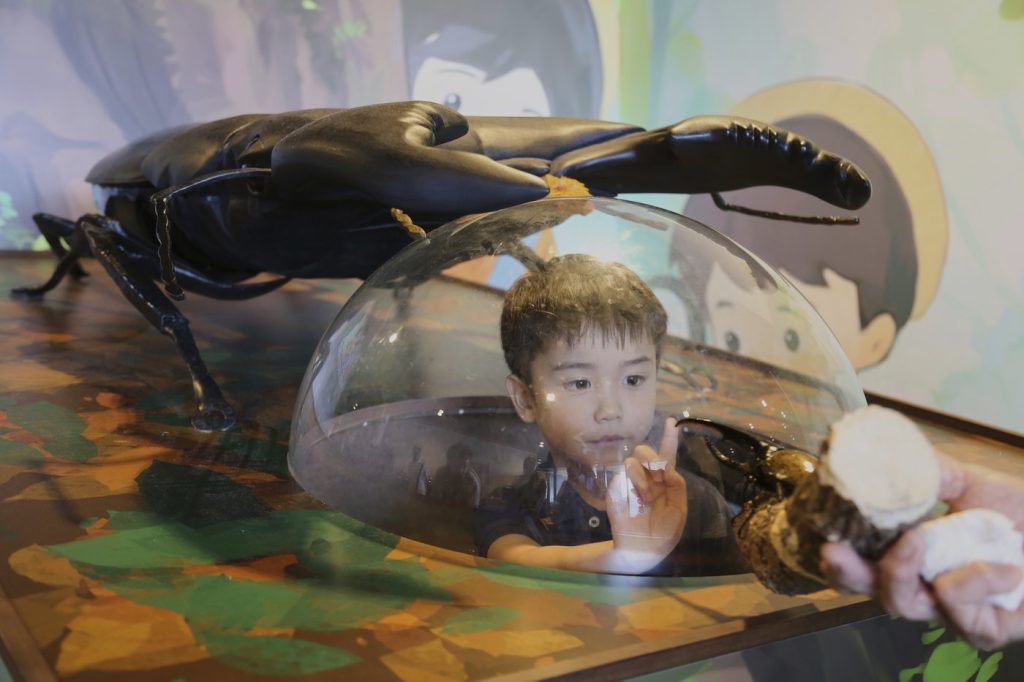TOKYO (AP) — In Japan, the preferred pets extend beyond cuddly cats and playful dogs to include the often overlooked bug. This fascination with insects is deeply embedded in Japanese culture, tracing back to the Heian era classic "The Tale of Genji" and continuing into contemporary manga and anime, such as "Mushishi," that features insect-like supernatural beings.
Japanese citizens cherish the brilliance of fireflies that light up gardens and the soothing sounds of crickets housed in small cages. While bugs can be fed typical fruits like watermelon, specialized jelly pet food for insects is available in various stores. Insects are also commercially sold, with rare species fetching prices up to 20,000 yen (approximately $133).
In Japan, the relationship with bugs transcends mere scientific study; celebrity figures openly share their passion for insect hunting, reminiscent of how Western stars might discuss their yachts or golf achievements. This interaction with insects is a deep-rooted reflection of humanity's connection with nature.
Professor Munetoshi Maruyama from Kyushu University emphasizes the allure of studying insects, which can reveal new discoveries, with over 1.2 million known insect species, many of which remain undocumented. Maruyama himself has identified 250 new species, highlighting the vastness of this field. Unlike much of the Western world, Japan promotes a hands-on approach to engaging with bugs from an early age, featuring numerous children’s books and educational activities centered around these creatures.
Maruyama points out that children in Japan have a natural affinity for bugs, to the extent that insect-catching nets can even be purchased at convenience stores. He notes, "It’s fantastic that bugs can serve as a doorway to science," as the metamorphosis process of many bugs fascinates children, allowing them to witness the life stages of these creatures.
Insects also play significant roles in studying environmental issues such as global warming. Social insects like bees and ants exhibit remarkable intelligence, showcasing their communication skills and capacity to create intricate habitats. The indispensable functions bugs serve in ecosystems, such as pollination and providing nourishment for various wildlife, underline humanity's reliance on them. Without insects, sustaining human life would be incredibly challenging.
This admiration for insects was evident at "The Great Insect Exhibition" in Tokyo's Sky Tree Tower, where visitors, particularly children, gathered to observe and interact with numerous beetle species. Among them was the Hercules beetle, renowned as one of the largest beetles globally, originating from the Caribbean but now also found in Japan. Its shiny khaki shell changes color with the seasons, while its horn and spiky legs are typically darker.
Toyoji Suzuki, one of the event organizers, passionately encourages children and adults alike to touch the beetles, stating, "We want the kids to feel the emotions and joy of actually touching the insects here. That’s really positive for the workings of a child’s brain." Suzuki believes this tactile experience can significantly benefit developmental processes in children.
Asahi Yamauchi, a four-year-old who attended the exhibit with his grandmother, expressed his love for insects, stating he possesses a "cute beetle" at home, akin to his fascination with dinosaurs. The accessibility and hands-on nature of bug culture in Japan continue to captivate young minds and foster a generation that appreciates these remarkable creatures.










